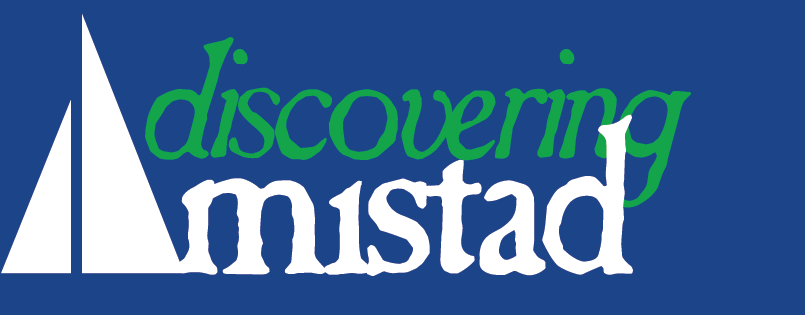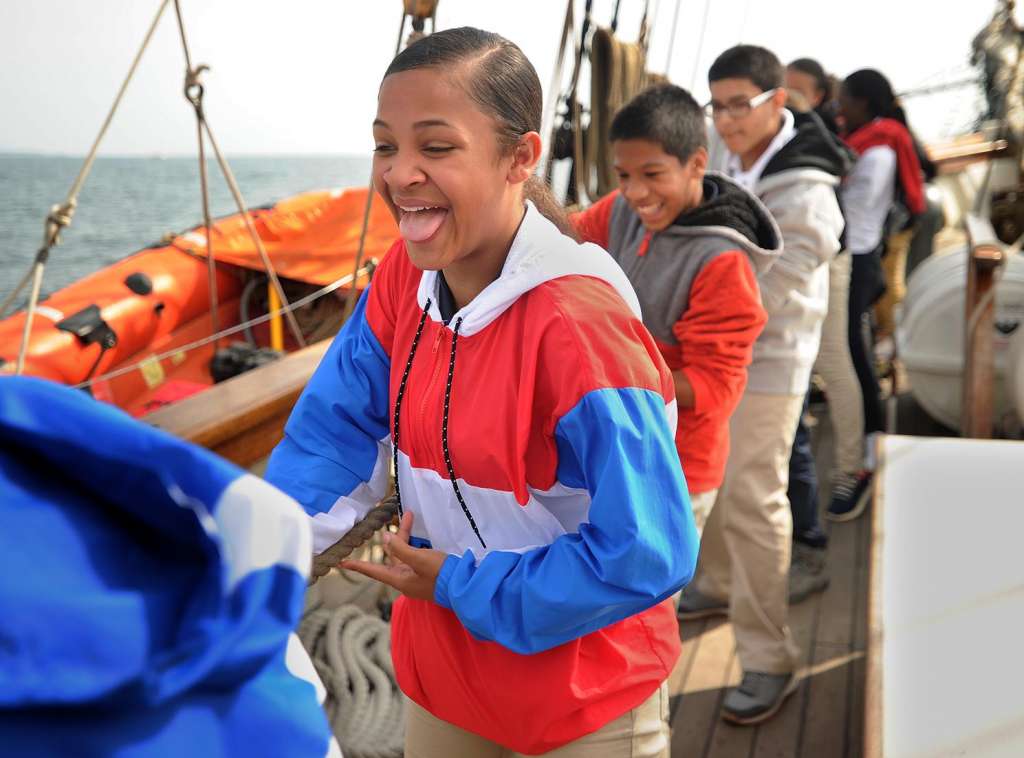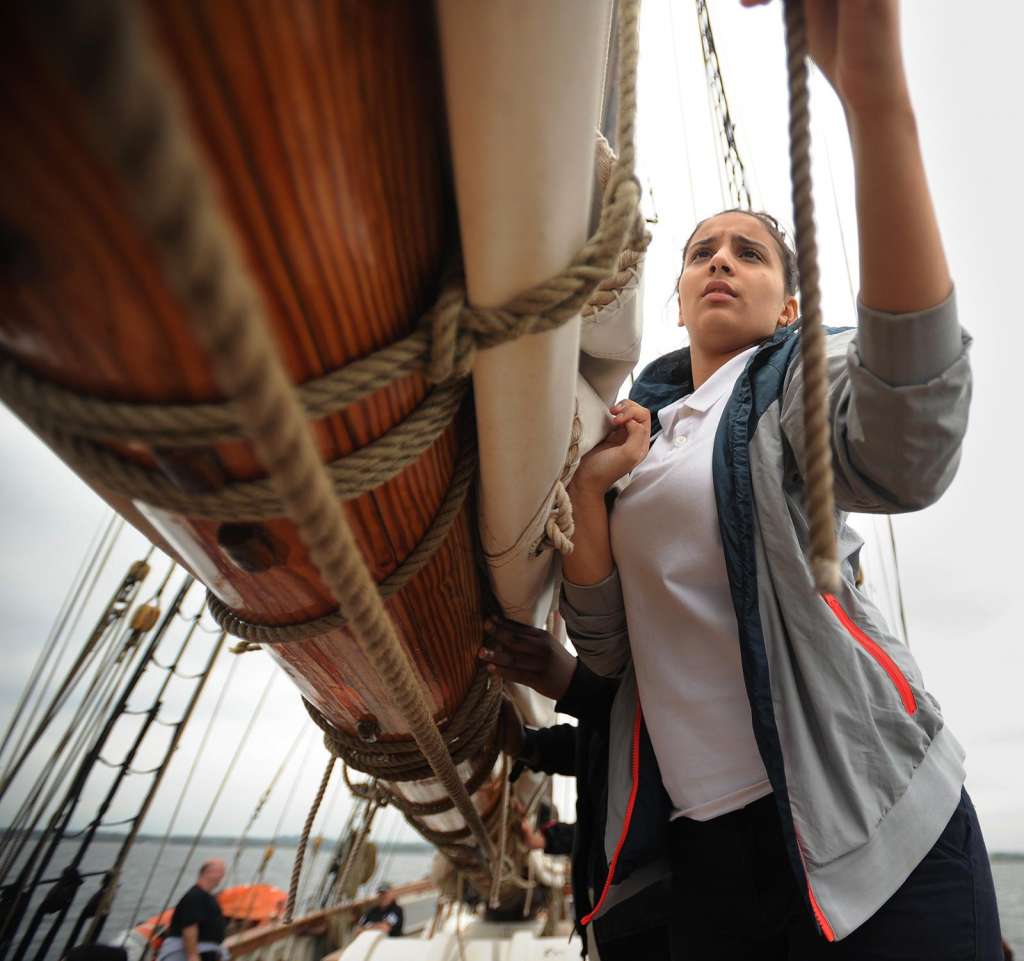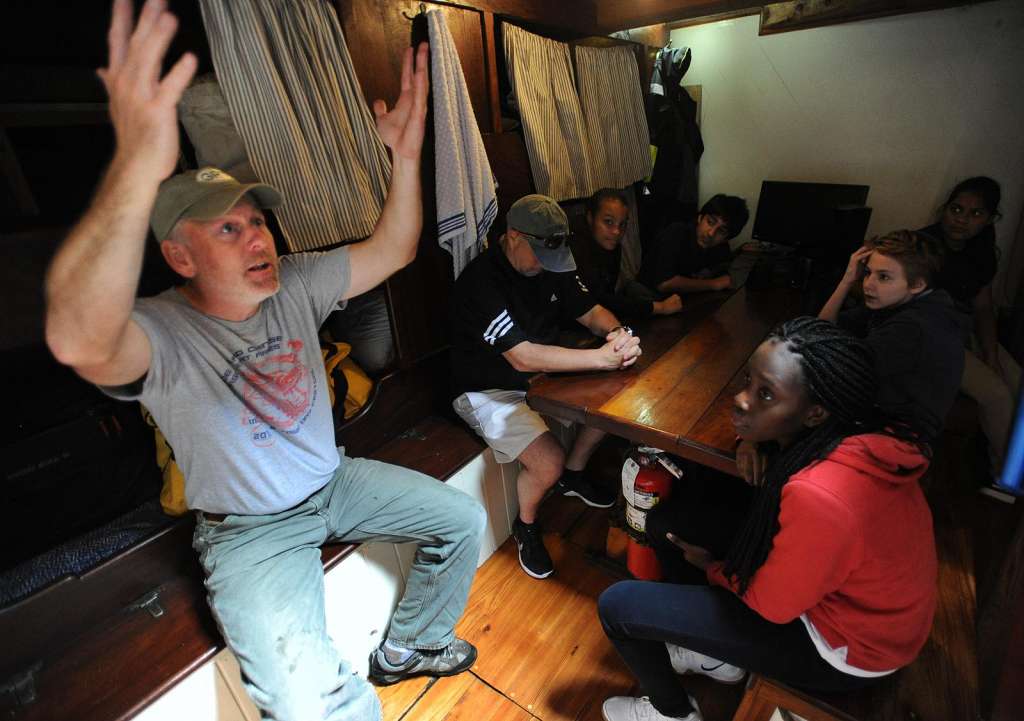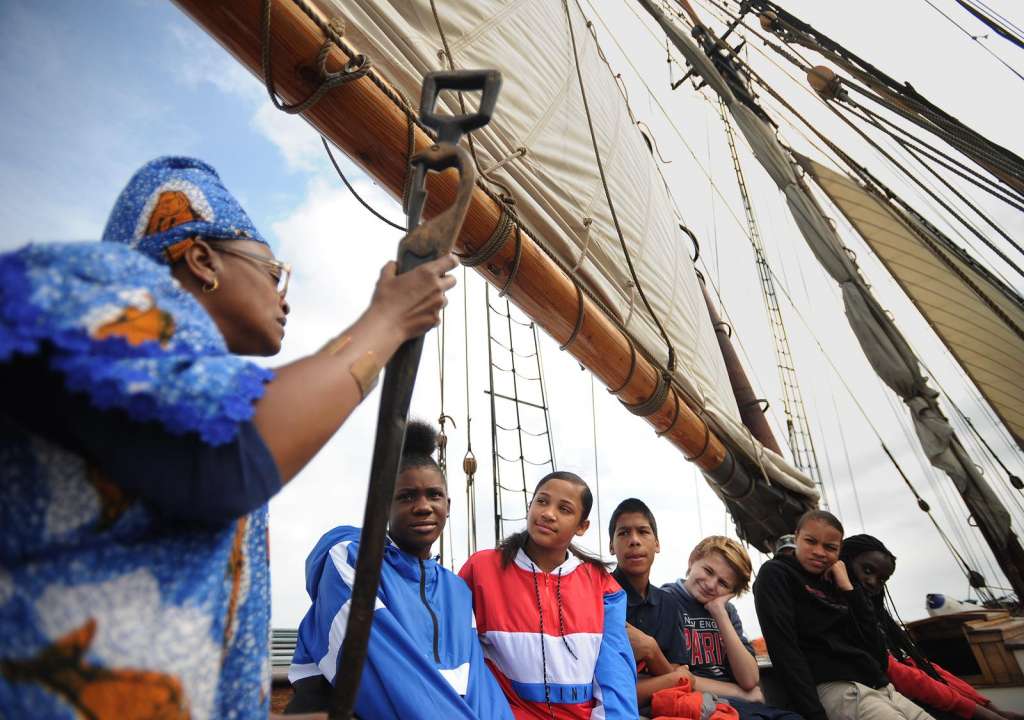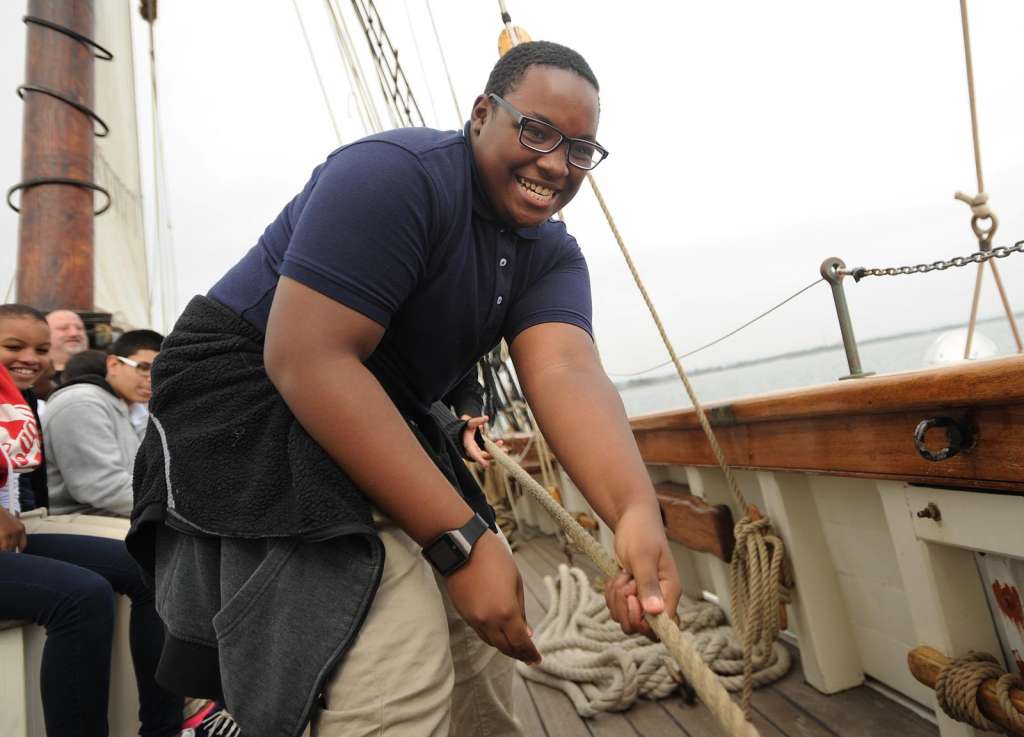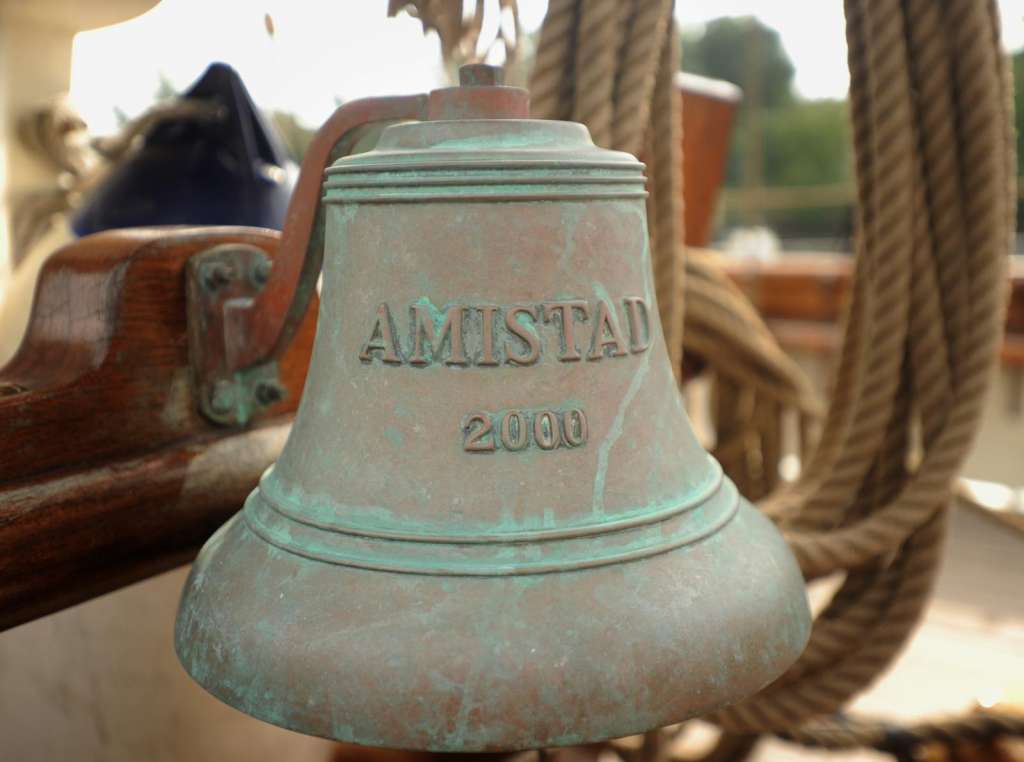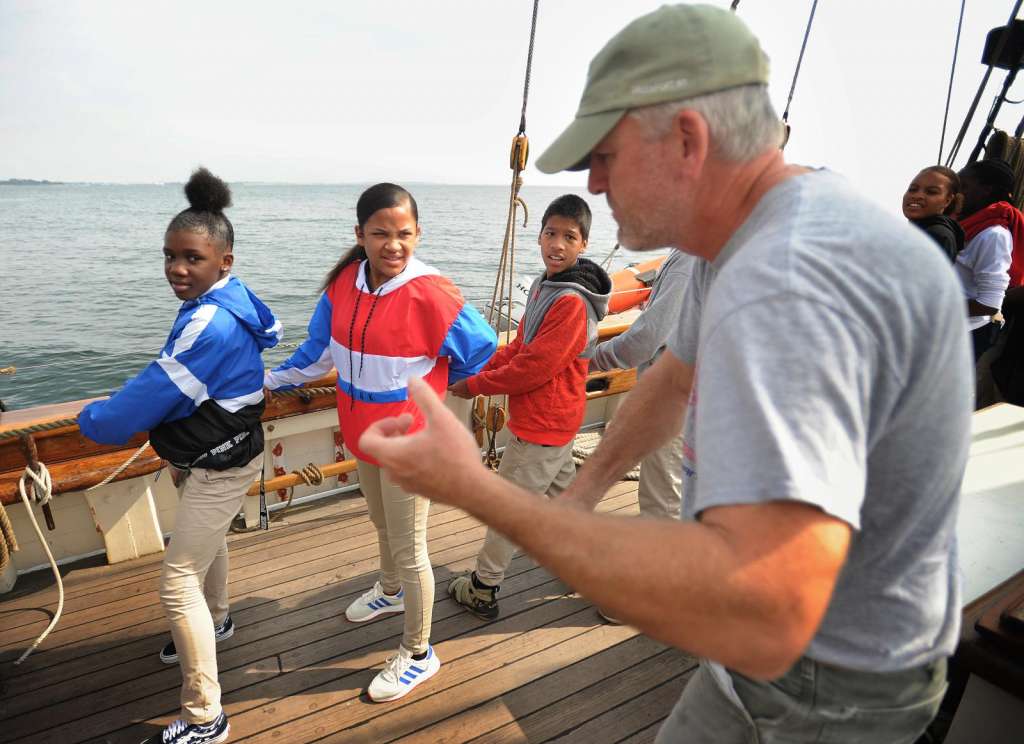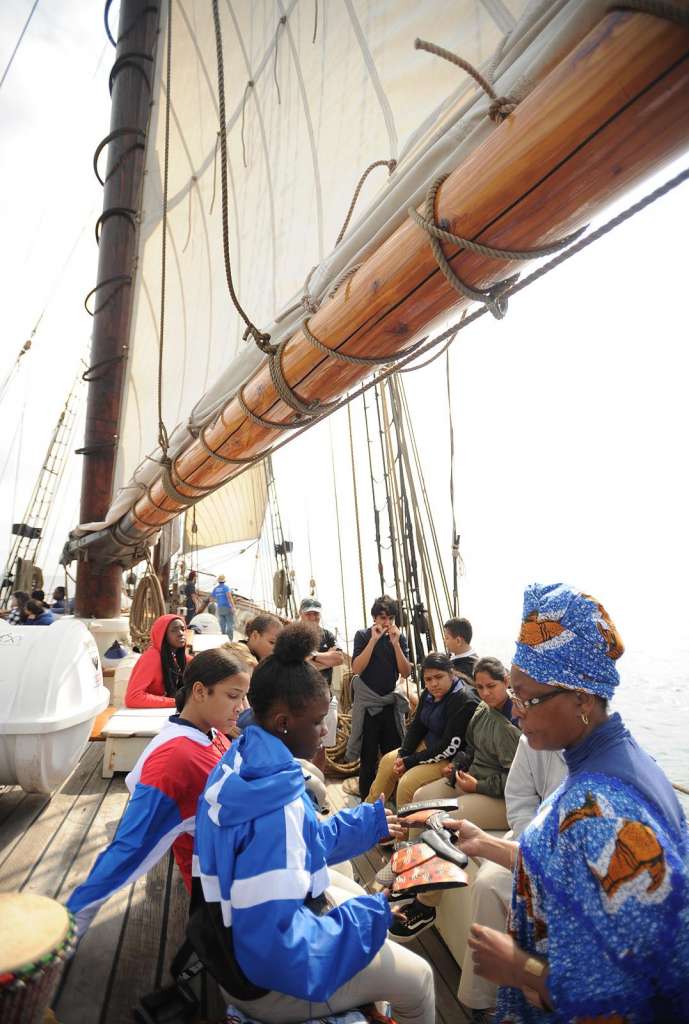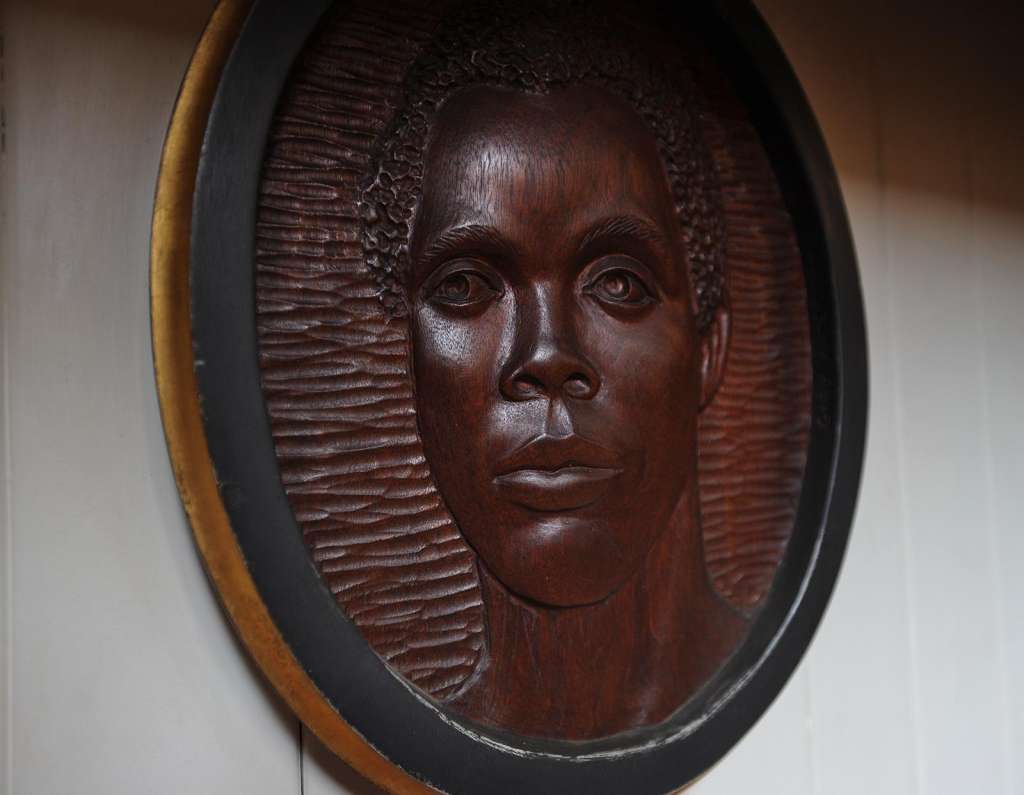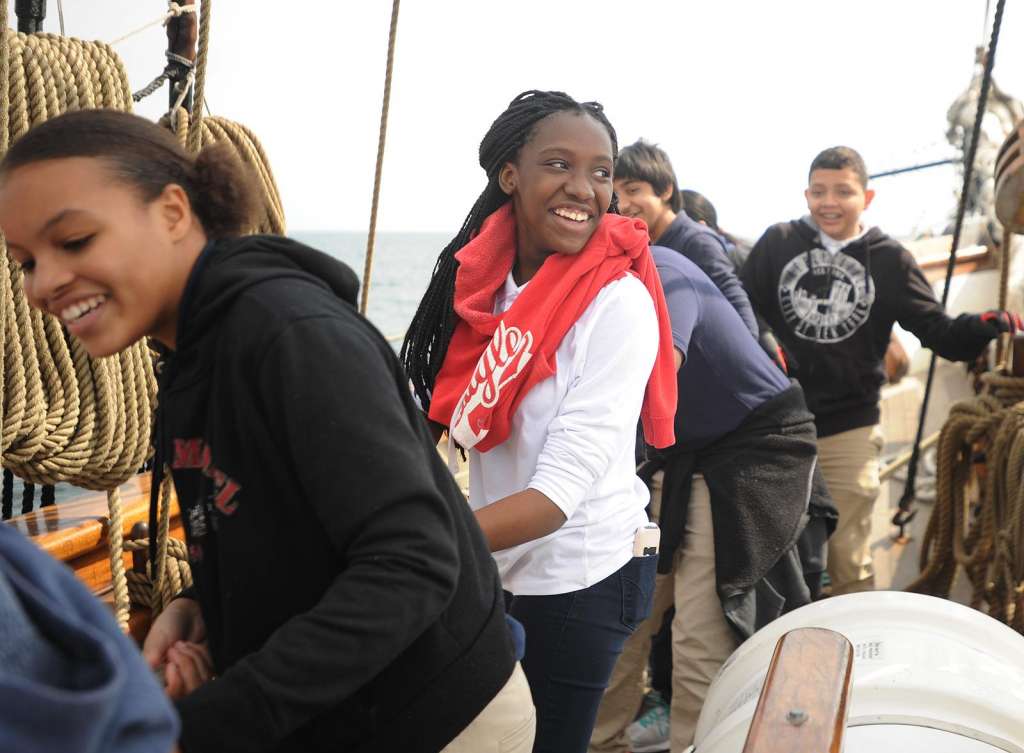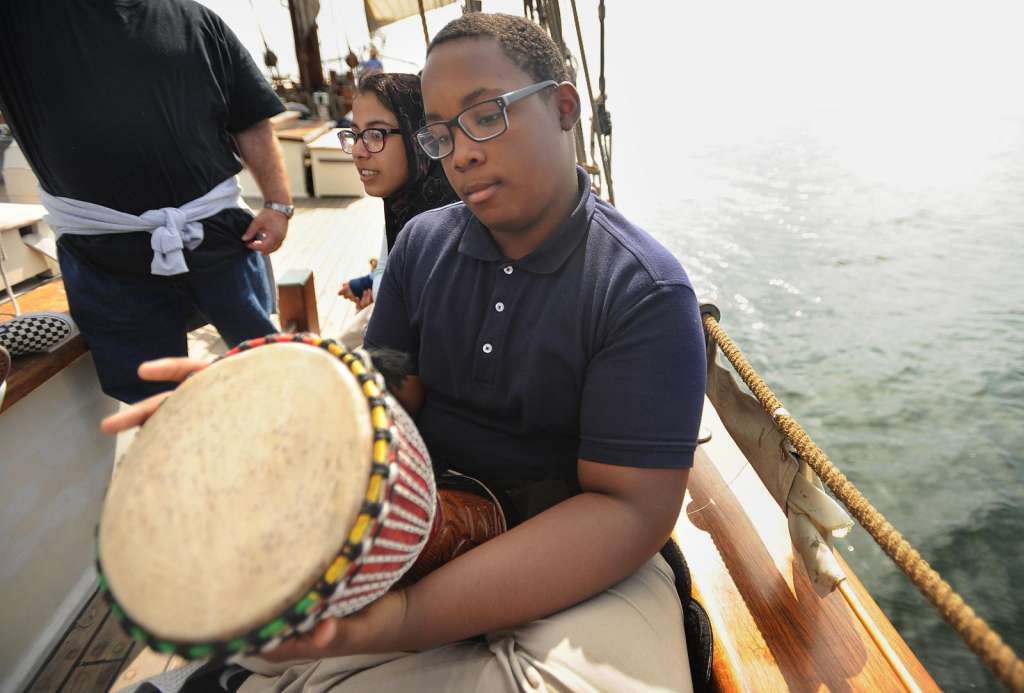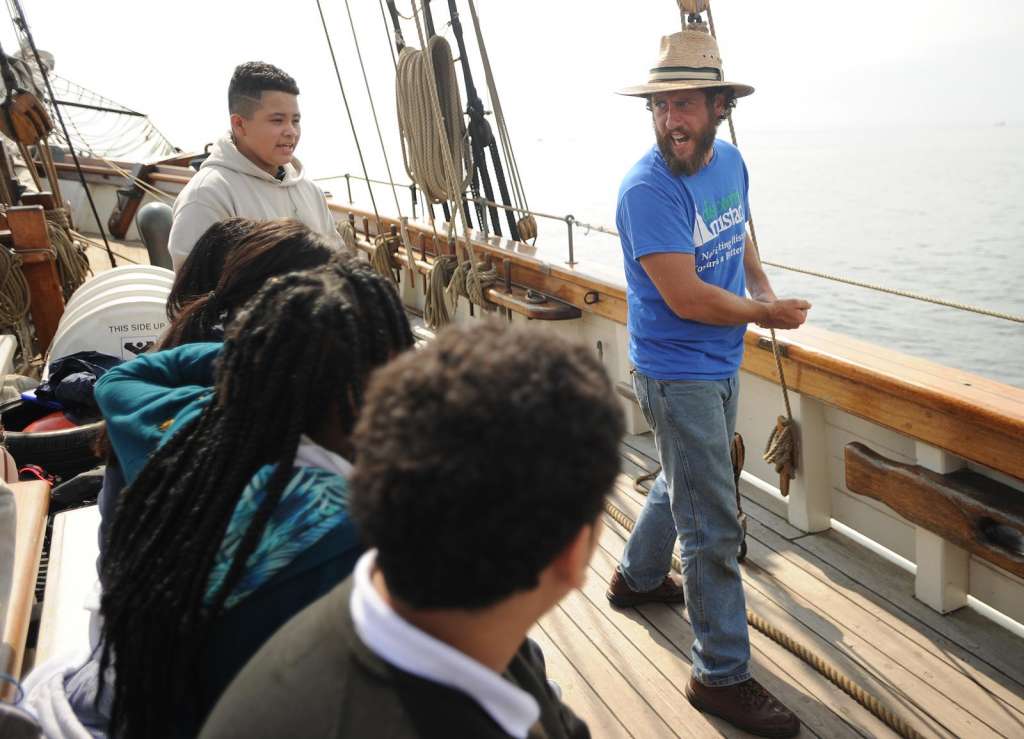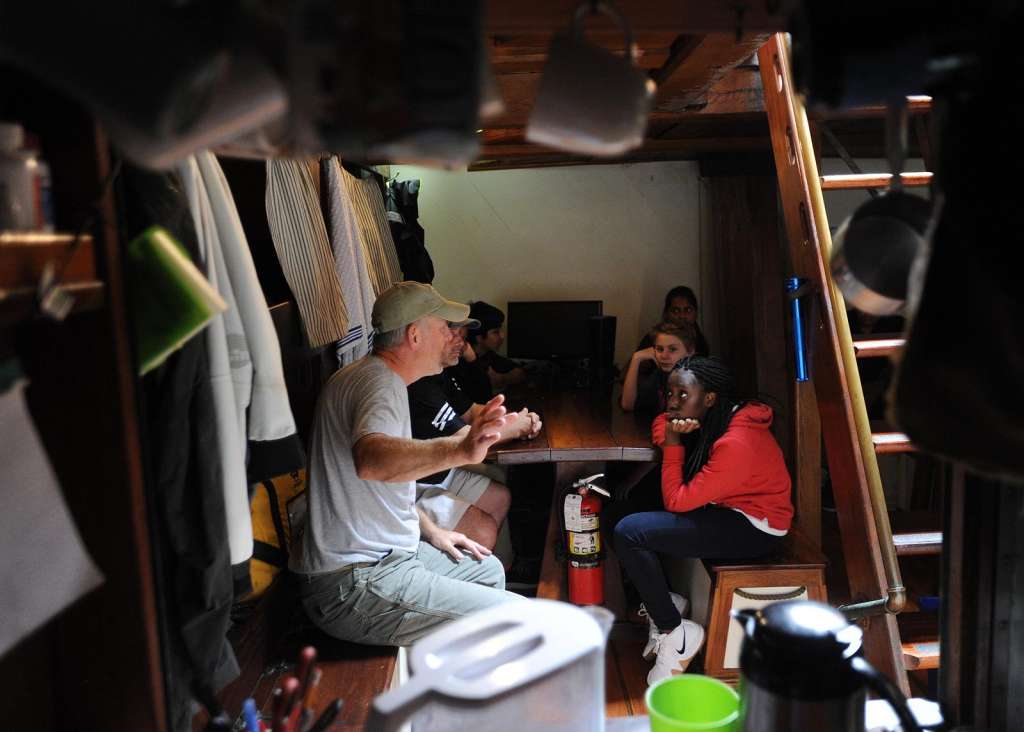MEDIA center: Article
Aboard the Amistad replica, students connect history to experience
CT Post | October 2, 2018
By Linda Conner Lambeck
Photos: Brian A. Pounds / Hearst Connecticut Media
BRIDGEPORT — With the city coastline growing pencil thin behind them, Curiale School eighth-graders remained silent as the captain aboard the tall ship barked orders to his crew.
Not until the all-clear sign was given were the 24 students allowed to resume their excited chatter about whether a large rock in the distant waves was a whale, what the smell was coming from below deck and what life must have been like nearly two centuries ago aboard a very similar vessel, the Spanish schooner called the “Amistad.”
“It was important for Africans to know where they are coming from and where they are to chart their course for the future,” Adwoa Bandele-Astante, an educator, told students huddled around her station aboard the 127-foot long schooner.
A nonprofit educational organization that offers year-round programming up and down the East Coast, Discovering Amistad of New Haven invited two groups of Curiale School upperclassmen to spend the day aboard the vessel that has spent the past two weeks at Captains Cove.
Completed in 2000, the boat is a replica of the vessel aboard which a slave rebellion occurred in 1839. The boat was carrying 53 Mende slaves from Havana, Cuba, to their purchasers' plantations when the African captives gained control of the ship and tried to make their way back to Sierra Leone.
Instead, the ship was captured and towed to New London Harbor. Their plight ended up in the courts, eventually winding up in the U.S. Supreme Court, which ordered the slaves freed.
“The modern Amistad exists solely to tell that story,” Rose Witte of Redding, the first mate aboard the boat, said. “Telling the story of the struggle for freedom. A story that is still relevant to this day.”
Eighth-grade Curiale teachers Jaime Rodrigues and Bill Bunin said being on the boat gives students who are starting to learn the story a chance to experience it from a different perspective.
Their students agreed.
Easing backward down the ladder that led to a lower deck, Vincent Penzerro, 14, said he wanted to know how everything worked.
“I didn’t know it was going to be this interesting,” Penzerro said.
Sharmin Akther, 12, liked going down below, too, but also pulling the ropes with classmates who formed lines on either side of the vessel, working together to raise the sails and drop the line.
“I learned it’s pretty difficult to sail,” classmate Robert McDougall, 13, chimed in.
For Francisco Nadarret, 13, and most of the rest, it was their first time on a boat, at least of this kind. An hour into the trip, most had shed their jackets and had them tied around their waists.
They learned the replica is larger than the original Amistad, has an engine and a steering wheel, six waterproof compartments and flooring below the main deck. There are also 22 bunks, enough to take high school students on two-week summer trips.
“Down below used to be just a pile of stuff, like a floating general store,” Jason Hine, who has worked on the Amistad for three years, said of the cargo hull.
“How do you not vomit down here,” Deivy Franco, 13, asked when it was time for questions.
Even sailors get sea sick when the waves are rough, Hine told him, adding that going back on deck where one can look at where the land meets water often helps.
Back at Bandele-Asante’s station, she let students touch artifacts like drums, walking sticks and a hollowed-out calabash.
Drums, the students were told, weren’t allowed in the Colonial environment. One, because they could provide a means for slaves to communicate and two, it was a connection to a past where the people were strong, confident and intelligent.
“It was an ordered society,” she said, explaining that the word diaspora meant to spread out and that the African diaspora is a vibrant one.
This weekend, the ship sails to New Haven. It will winter in Mystic.
Discovering Amistad educators will return to Curiale to do a follow up presentation in the near future.
